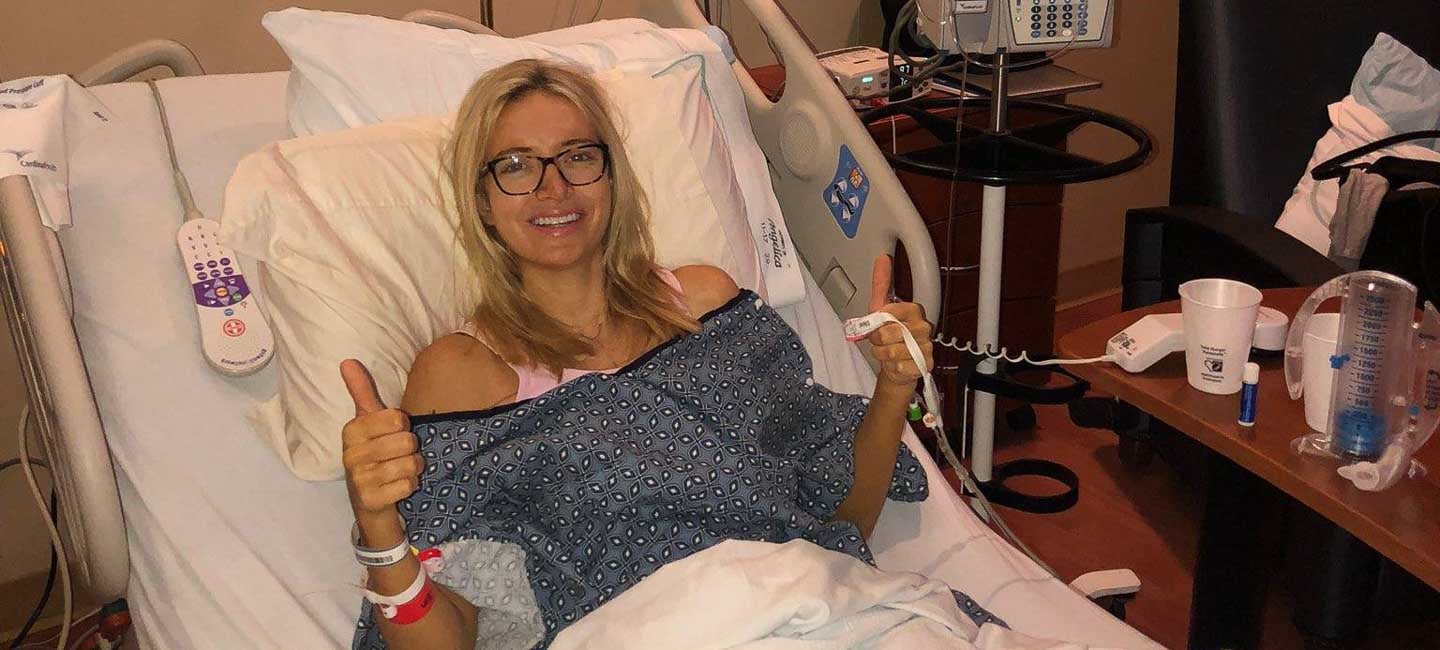Undergoing a Mastectomy without a Cancer Diagnosis
For nearly 10 years GOP spokeswoman Kayleigh McEnany lived in fear. Each day she woke up wondering if this would be the day doctors diagnose her with cancer. Eight women in her family battled the disease, including several who were diagnosed in their early 20’s.
In 2009 her mother learned she carried the BRCA2 gene, which meant she had a nearly 70 percent higher risk of developing breast cancer than a woman without the gene. She decided this was one family tradition she didn’t want to carry on and took matters into her own hands by having a bilateral prophylactic mastectomy at Moffitt Cancer Center. Removing both of her breasts reduced her risk of getting breast cancer by 95 percent.
At the time, having a double mastectomy without a cancer diagnosis was considered radical. That changed in 2013 when actress Angelina Jolie made front-page news by announcing her own double mastectomy after learning she carried the BRCA1 gene. A Harvard study shows the number of women getting tested for the BRCA1 and BRCA2 genes increased 64 percent within 15 days of Jolie’s announcement. The trend for preventative mastectomies was steadily increasing before this announcement. According to a study in the Journal of the American Medical Association, the number of young women opting for a risk-reducing mastectomy rose from 10.5 percent to 33 percent between 2005 and 2012. This includes women who had had breast cancer in one breast and decided to have the other breast removed as a precaution. Researchers say there are several factors leading the prophylactic mastectomy trend. One is that breast surgery and reconstruction has improved to the point that many women don’t consider it the disfiguring procedure that drove lumpectomy to be the surgery of choice.
McEnany was just 20 years old when her mother underwent surgery, and given her family history, decided to be tested. On Christmas Eve 2009, she received a phone call with the devastating news: Like her mother, she carried the BRCA2 gene. Scared and sad, she relayed the news to her family with tears streaming down her face.
But she waited almost 10 years to have her surgery.
For a decade, she underwent aggressive, routine surveillance, consisting of mammograms and MRI’s every six months at Moffitt. She lived in a constant state of fear, worried that every screening would end with a cancer diagnosis.
She says her 20’s were blessed and free from cancer, but not the prospect of it. McEnany wanted to be married before having the surgery. When she said her vows in November 2017, she knew it was time to move forward with the operation.
Just days after her 30th birthday, McEnany underwent a five-hour prophylactic bilateral mastectomy. For the first time in 10 years, she opened her eyes unafraid. “When I woke up I asked my doctor if she even did the surgery, “McEnany said. “I asked that question because I physically looked the same.”
McEnany opted for a nipple-sparing mastectomy. Back in 2010, she prepared for the eventual mastectomy by having breast implants placed. During that procedure, her doctor left a cavity that would expand with time. So when the breast tissue was removed during her mastectomy, McEnany kept the implants, eliminating the need for reconstructive surgery. Dr. Christine Laronga, a surgical oncologist at Moffitt, says having a prophylactic mastectomy reduces a woman’s chance of developing breast cancer by 95 percent because it reduces the amount of breast tissue where cancer can grow. She says women who are confirmed carriers of a high penetrance gene, such as BRCA1 and 2, and/or have a strong family history of a hereditary breast cancer syndrome can consider the option of risk-reducing surgery.
Dr. Laronga says the decision to go under the knife before a breast cancer diagnosis remains a personal choice. She reminds women that even though carrying the BRCA gene significantly increases the risk of breast cancer it does not guarantee cancer will develop. Plus, a preventative mastectomy is not a 100 percent insurance policy against breast cancer because it is impossible to remove every single breast cancer cell. The few remaining cells may go on to become cancerous down the road.
According to the National Cancer Institute, the chest wall may contain some breast tissue and is not typically removed during a mastectomy. Breast tissue may also be found in the armpit, above the collarbone, and as far down as the abdomen. It is impossible for a surgeon to remove all of this tissue. But Dr. Laronga says preventive mastectomy is the best risk reduction strategy we have at this point in time.
Reducing the risk of breast cancer by 95 percent is appealing to some women who learn they carry the BRCA gene and have watched family members battle the disease.
Laronga says testing positive for a BRCA gene is not the only reason some women opt for prophylactic mastectomy. “Especially when a person is diagnosed with breast cancer, they may elect to remove the contralateral breast in prevention. And for genetic carriers without cancer, there is a rise in bilateral prophylactic mastectomies because of increased genetic testing awareness, availability, decreased costs and multigene panels.”
Plus, a 1998 federal law requires insurers to cover reconstructive surgery after a mastectomy. At this time, no federal laws require insurance providers to cover prophylactic mastectomy. Some state laws require coverage for prophylactic mastectomy, but coverage varies state to state.
As for McEnany, she says, “I feel good knowing that breast cancer is one battle I probably won’t have to face.”



